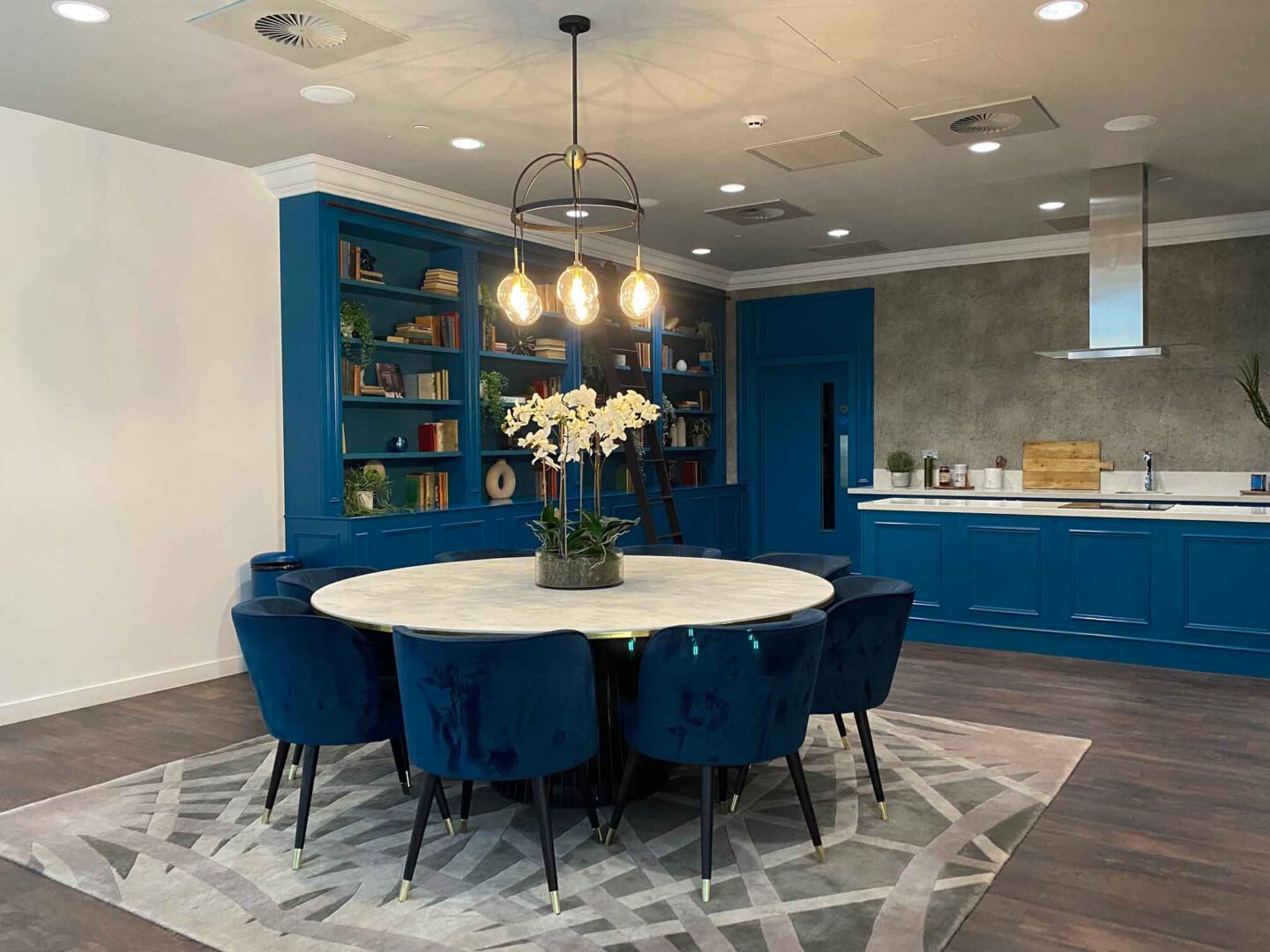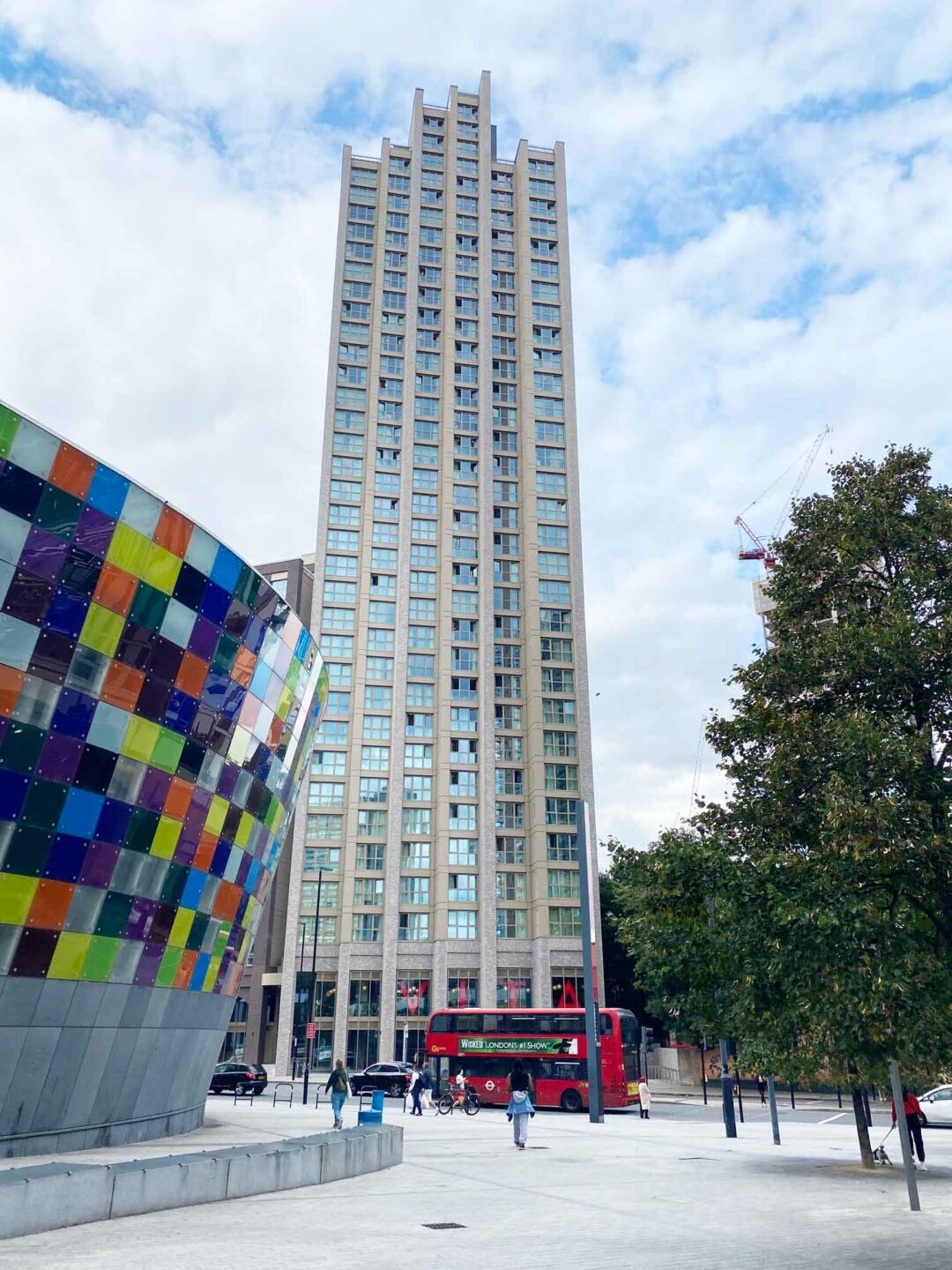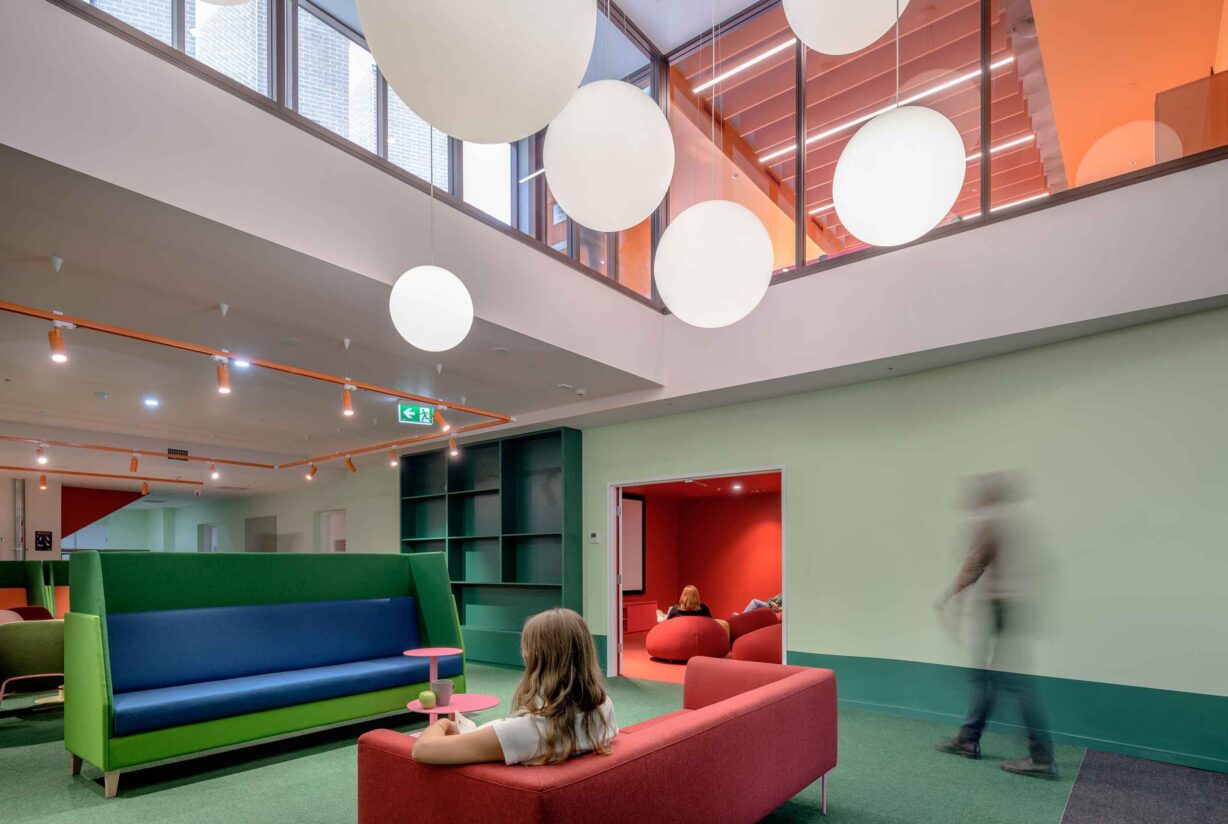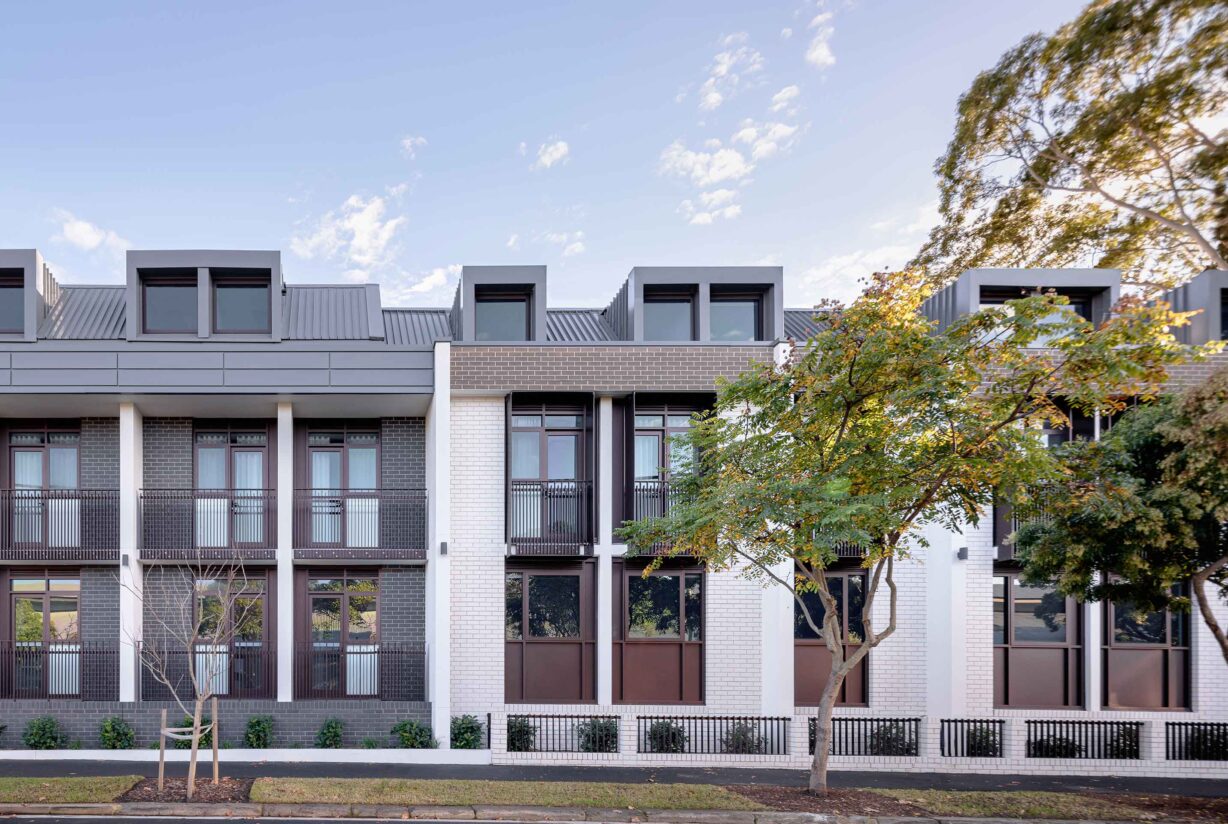Travel Notes | UK Student Accommodation
April 2023 | By Brian Mariotti
On a road trip through London and Manchester, AJC Director Brian Mariotti explored Purpose Built Student Accommodation (PBSA) projects and the global-local push-pull factors at play in this burgeoning sector.
In what’s known as the PBSA sector, AJC has over 1,000 new places currently in the pipeline for Australian and international clients. In the past ten years, we’ve completed around 3,000 new places over ten projects, including Scape Darling Square 1 & 2, Scape Wilson Street, ACU Australia Street, Wee Hur Regent and Gibbons Street Redfern, ECU Joondalup and Curtin University Kalgoorlie (WA).
Suffice to say, its more than a passing interest of mine, so on a recent UK holiday, I did a road trip to visit some new student accommodation villages in London and Manchester, which has some of the highest density and concentration of student accommodation that I’ve seen outside of Carlton in Melbourne.
Madchester rules
Home of The Smiths, Oasis and Joy Division, and best known as ‘Madchester’ for its music scene, Manchester attracts both local and international students with its vibrant social scene, as well as the high quality of education offered at the Universities of Manchester, Salford and Manchester Metropolitan, The Royal College of Music and numerous other colleges in and around the city.
To meet this demand, purpose-built student accommodation buildings (PBSA) have been springing up across the city, developed by global giants such as Campus Living Villages and Dwell, along with UK providers Vita, Unite and iQ.

Build-to-Rent developers such as Vita Living and Kampus have also been busy with providing alternatives for students, graduates and young professionals wanting to live in the city.
Vita Living has an impressive village at Manchester Circle Square, with four buildings designed by Fielden Clegg Bradley Studios offering student accommodation in either regular (though still very well appointed) or premium grade and a Build-to-Rent tower. I was lucky to get a guided tour with its project architect Ernst ten Horst.
Vita has a lively, sophisticated feel as you enter, with games areas, quiet lounges and movie rooms at street level, which engages its neighbourhood with graphic portraits of well-known Mancunians in the lobby. Each of the four buildings has more common areas on the top floor opening onto roof terraces that take in sweeping city views.

Formal dining
A noticeable difference from the Sydney student projects we’ve worked on, are the bookable private dining rooms which have a big table and large domestic-style kitchen for groups or visiting relatives and friends to get together, cook eat and socialise separate from the general common areas. This aspect (of operation) has more in common with our local higher end retirement villages, so it’s an interesting variation, and I wonder if it would work here?
Dwell’s accommodation includes a historic warehouse building, with its heritage vaulted brick ceilings left beautifully exposed in the rooms and circulation spaces.
At Salford University, Campus Living Villages follows a different model, being more affordable, almost exclusively shared apartments with fewer communal areas – with the benefit of the university’s extensive grounds and facilities right on the doorstep.

High-rise
A few tube stops from central London, the high-rise Vita Lewisham Exchange student accommodation is a 35-storey tower boasting brilliant view and amenities including gym, café, cycle store, private dining and 24-hour on-site management. Beautifully finished in London’s characteristic straw-coloured brickwork, it looks better than most of Sydney’s apartment buildings, and totally transforms the old ‘cheap and cheerful’ aesthetic of student accommodation architecture.


Heritage aware
By contrast to the high-rise models of Lewisham and Manchester, Archwood House at University of the Arts London is sensitively inserted into the Victorian streetscape, each wing scaled and detailed to match the four-storey townhouses along Peckham Hill Street and clad in the same beautiful straw-coloured brick. These buildings are a great example of sensitive urban design, fitting student accommodation into a heritage area much like we did at Scape Wilson Lane in Sydney’s inner-city suburb of Newtown.

Urban creatures
And finally, to a familiar name in this space, Urbanest in Hoxton rubs shoulders with the local bars, clubs and galleries and claims to be one of the group’s ‘most social’ sites, with its own ground floor café and communal roof terrace. I really liked how a ‘sense of place’ was created by the full wall sized black and white photos of London in all of the living rooms; after all you’d be living in the heart of everything near Kings College London, London School of Economics and London Film School, as well as good transport links via nearby Old Street Tube Station.

You might be wondering why we’re looking at overseas models. Well, in the international market for higher education, Australia punches well above its weight. According to a 2021 report by Savills Research, for the second consecutive year, Australia has 13 universities in the Global Top 200, along with Germany, which has more than three times the population. The United States (US) holds first place (with 54, down from 63 in 2012) and the United Kingdom second (with 27). Seven Australian universities are now in the top 100.
Paying its way
Prior to the Covid-19 pandemic, international education was Australia’s largest service-based export, supporting an estimated 240,000 jobs, business opportunities and economic growth, according to the Savills report, which looked at the sector and its post-Covid recovery path. Moreover, Deloitte Access Economics estimated that international students to Australia’s universities contribute around $19 billion to the national GDP, in a 2018 report prepared for Universities Australia.
Recent UK data from StuRents – Britain’s largest student accommodation portal –indicates that the rise in university-goers and a slowing supply of new student housing means that by 2025, the UK will face a shortfall of around 450,000 student beds. (Source: PBSA News) At a recent industry PCA forum What’s Next for Student Accommodation in Australia, a similar shortfall was predicted.
The global pandemic has further accelerated the global trend towards a re-allocation away from traditional real estate sectors to rented residential accommodation, including Purpose Built Student Accommodation sector (PBSA) a more mature market than Co-living and Build-to-Rent, which are still in their infancy here.
Welcome wagon
This means more opportunities for student accommodation providers to target their markets and tailor projects accordingly, offering more to enhance the student experience – from diverse facilities to welcoming events. In June 2022 for instance, Scape hosted three TikTok food creators to create the first-ever TikTok inspired pop-up restaurant at the dining room of its Eveleigh Street property in Sydney.
Supply vs. demand
But let’s not ignore domestic housing pressures in contributing to the growth in demand for PBSA. Torie Brown, Executive Director of the PCA’s Student Accommodation Council, recently observed: “With rental markets as tight as they are, we are seeing more and more Australian students moving into PBSA, with the report revealing a quarter (26%) of all PBSA residents are domestic students, just one percentage point behind students from China (27%).
“Purpose-built student accommodation plays a vital role in releasing pressure on the housing market, because students living in these buildings aren’t competing with mums and dads for private rentals,” she said.
Still the ones
So, where do most of our overseas students come from? Well, again, to quote Savills, Chinese students remain the largest source of overseas enrolment, increasing to 42% of all 2021 intake, with Chinese students considered more resilient and capable at adapting to remote online study than students from other countries.
A 2021 artificial intelligence-based study by Mavern Data and the University of Sydney analysed millions of interactions with open access Mandarin websites, blogs and social media. It showed prospective Chinese students not only focus on universities and colleges, but also the health system, schools and lifestyle markers, suggesting that they are considering Australia not just as a study option, but a place to settle down.
Manchester (UK) has some of the highest density and concentration of student accommodation that I’ve seen outside of Carlton in Melbourne.
AJC Director, Brian Mariotti




